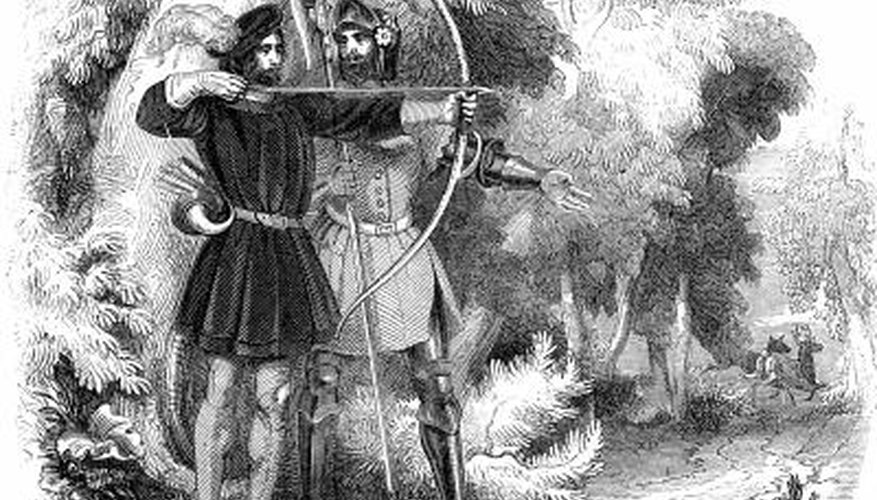Physicians and surgeons in the Middle Ages had very limited medical knowledge, and what they did know was based on ancient Greek medical texts written by Hippocrates and Galen. Physicians used very few tools, but surgeons, who were considered inferior to doctors, used more equipment, including arrow pullers, anesthetics and a wounded man chart.
Arrow Pullers
During the Middle Ages, Europe was in an almost constant state of warfare. As a result, surgeons' skills were in demand to repair battle wounds, particularly ones caused by arrows. A medieval scholar, Theodoric of Lucca, wrote, "Every day we see new instruments and new methods to extract arrows being invented by clever and ingenious surgeons." The arrow puller was a very important medical tool, as was the arrow spoon. A surgeon inserted the spoon into the wound and attached it to the arrowhead. The spoon covered the arrowhead and prevented the barbs from causing more damage.
- During the Middle Ages, Europe was in an almost constant state of warfare.
- The arrow puller was a very important medical tool, as was the arrow spoon.
Bloodletting
Both physicians and surgeons used bloodletting tools. Bloodletting was the most common procedure in medieval medicine, so everyone -- even the barbers, who were only permitted to pull teeth and draw blood -- had a method for performing the procedure. Some used leeches that attached to the affected part of the body. The leeches sucked blood until they were full, then dropped off the body. The other method, called "venesection" used a fleam, a short, narrow blade used to cut the vein, and a small bowl to catch the blood.
- Both physicians and surgeons used bloodletting tools.
- Bloodletting was the most common procedure in medieval medicine, so everyone -- even the barbers, who were only permitted to pull teeth and draw blood -- had a method for performing the procedure.
The Wounded Man
Battlefield surgeons relied on an image called "a wounded man" to assist them. This was an early form of the medical textbook, and it showed a diagram of a man with every conceivable type of battle injury. In the diagram, the wound man has arrows, daggers, swords and spears stuck into him. The wound man showed the surgeon examples of the many types of wounds he would find, although it didn't actually tell the surgeon how to treat each type. The surgeon learnt which surgical treatment to use from other surgeons, as only physicians had any medical school training.
- Battlefield surgeons relied on an image called "a wounded man" to assist them.
- The surgeon learnt which surgical treatment to use from other surgeons, as only physicians had any medical school training.
Antiseptic and Anesthetic
Surgeons had no knowledge of antiseptics, so they used wine to clean wounds. As alcohol kills germs, this method does make some sense. Prior to this, a poultice of wine and oil was often used to dress wounds, which had both an antiseptic and protective effect. They used mandrake root, opium and hemlock to anaesthetise patients before operating. However, hemlock is a known poison and the anesthetic concoction could have been responsible for patient deaths.
- Surgeons had no knowledge of antiseptics, so they used wine to clean wounds.
- However, hemlock is a known poison and the anesthetic concoction could have been responsible for patient deaths.
